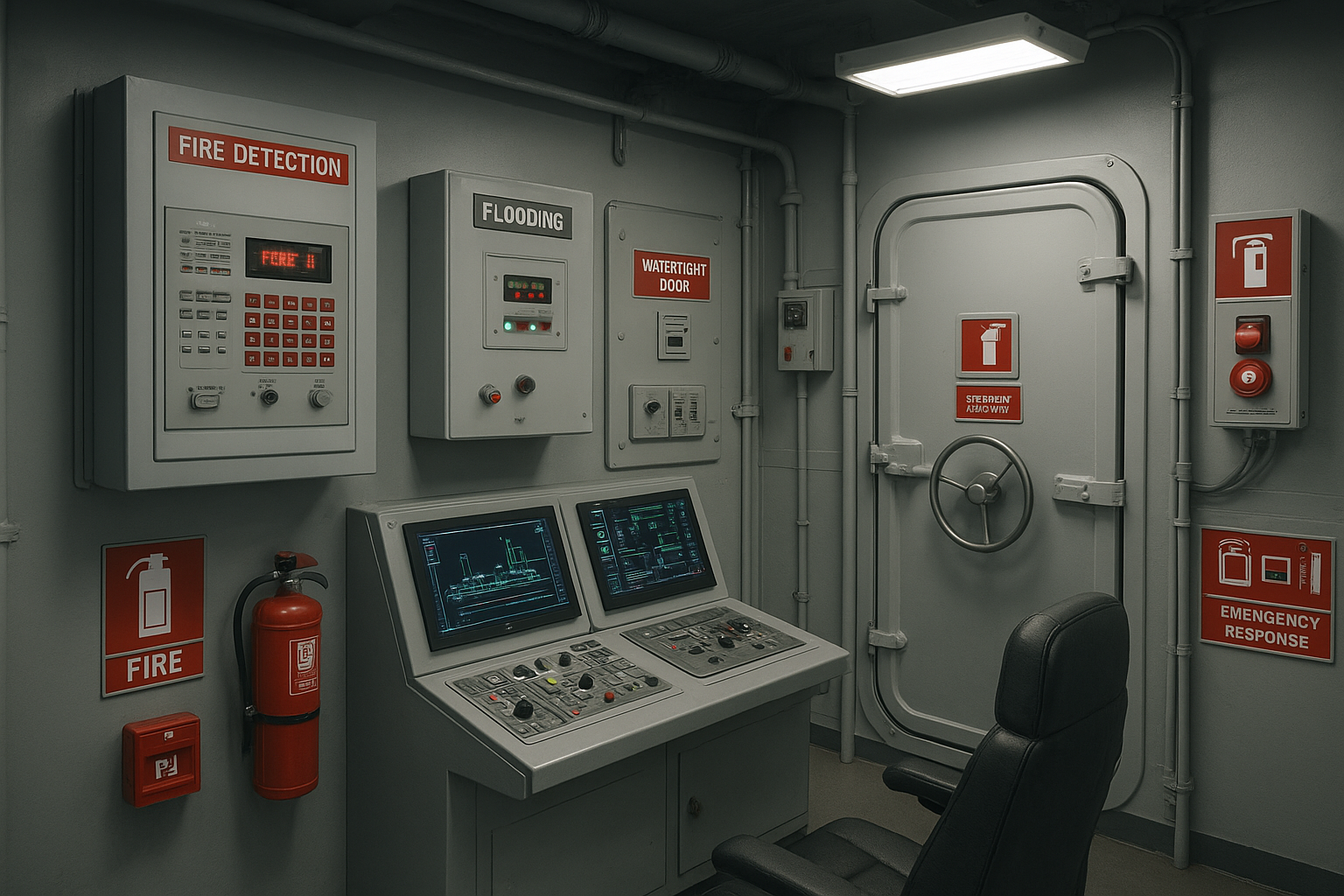
Emergency Systems Onboard Ships: Fire Detection, Flooding Systems, and Watertight Compartments
The Invisible Safety Net
Fire Detection Systems: Seeing the Invisible
Fire Suppression Systems: Fighting Fire Automatically
Flooding Detection Systems: Monitoring Every Drop
Watertight Compartments: Containing the Damage
Emergency Power Systems: Keeping the Lights On
Communication Systems: Calling for Help
How These Systems Work Together
The Bottom Line
Share This Article
Related Articles
Continue reading with these related articles

Cruise Ship Passenger Safety: Essential Guidelines for Safe Voyages
Discover essential cruise ship passenger safety guidelines, from emergency procedures to onboard safety measures. Learn what to expect during your cruise and how cruise ships keep passengers safe at sea.

Passenger Safety at Sea: A Comprehensive Guide to Maritime Safety Protocols and Procedures
Discover comprehensive passenger safety protocols at sea, from emergency procedures to safety equipment. Learn about cruise ship safety, medical facilities, and maritime emergency response systems that protect passengers.

Bridge Safety Equipment: Weather Detection, Radio Communications, and Emergency Beacons
Discover the advanced safety equipment in the ship's bridge, including weather monitoring, communication systems, and emergency positioning beacons that keep ships safe at sea.

Emergency Procedures and Safety Equipment on Ships: What Every Passenger Should Know
Learn about emergency procedures and safety equipment on ships, including fast rescue boats, lifeboats, and liferafts. Discover how ships are equipped to handle emergencies and keep passengers safe at sea.
© 2025 The Salty Mariner. All rights reserved.
